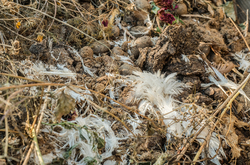How to give new life to poultry and wine industry waste
Food industry waste management is a critical issue, considering the environmental and health hazards involved with production and processing. For example, the poultry industry generates a vast amount of feather waste every year, most of which ends up in landfill or goes through an energy-intensive process to be converted into low-grade animal feed. According to the European Commission, 13.1 million tonnes of poultry meat were produced in the EU in 2014. The EU-funded KARMA2020 project is looking to transform this waste by-product into innovative green raw materials that could be used in various applications. These include biodegradable food packaging plastics, slow-release fertilisers, flame-retardant coatings and composite materials. Quoted in a news article, project coordinator Sarah Montes said: “Most of the waste is a profitable material. Due to its high keratin content, feathers are likely to produce plastics that are stronger and more tear-resistant compared to those using modified starch or plant proteins, for example.” During the initial stages of KARMA2020, scientists have focused on the pre-treatment and conditioning processes of feathers so that they are clean and safe to handle. They have also looked at how to turn them into raw material. In a recent newsletter on the project website, partners explained that the project is moving forward from laboratory to pilot scale. In the case of hot melt extrusion, for example, the team applies heat and pressure to melt a polymer in a continuous process in order to achieve mixing and formulations compounding. In the same newsletter, project members discussed this procedure: “The process is widely used in the polymer industry to produce plastic products such as bags, films, tubes, etc. and lately in the health care industry to mix active pharmaceutical ingredients with polymeric matrixes.” Finding uses for food waste The ongoing KARMA2020 (Industrial Feather Waste Valorisation for Sustainable KeRatin based MAterials.) project was set up to develop new bio-based products for high-impact sectors from poultry feather waste. Its vision to give a second life to food waste is also shared by the WineLeather project, which aims to produce organic leather using grape marc. This vegetal feedstock consists of seeds, stalks and skins of the grapes that are left over after winemaking. It’s typically discarded in landfills as agricultural waste. With the WineLeather project, this waste by-product will be used as a renewable raw material. The company behind this process is Vegea. Its VegeaTextile technology “offers an alternative and economically sustainable solution to the use of animal or fossil derived materials,” as explained on the company website. “The produced material is compatible with all the main industrial applications in the fashion, design, automotive and transportation fields.” The WineLeather (Innovative green leather production from wine industry waste) project hopes to industrialise this production process by 2022, according to CORDIS. For more information, please see: KARMA2020 project website WineLeather project
Countries
Spain, Italy



